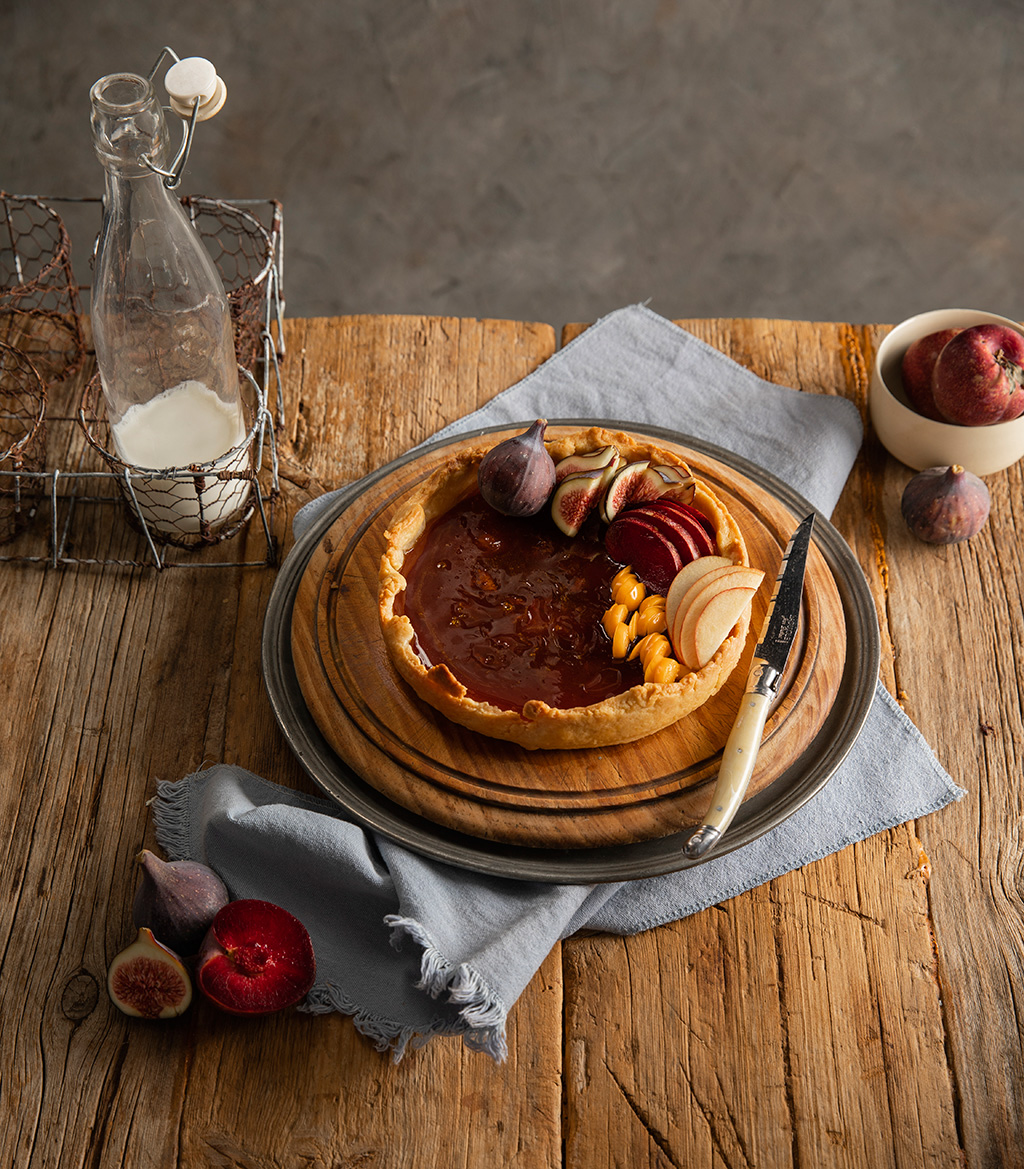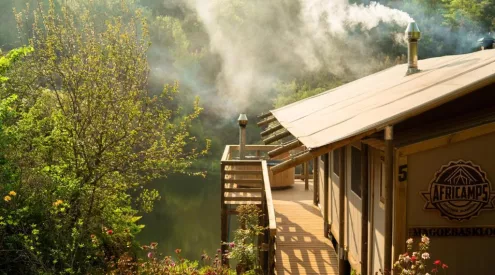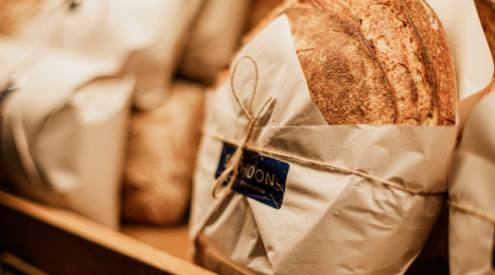One small tap on the caramel top exposes a deliciously delicate custard. Also known as Cambridge burnt cream or Trinity cream, this perennial treat was invented by the royal cook at Versailles in the late 1600s.
Here’s how to make the crisp topping without a blowtorch.

Decorate the tart with a selection of finely sliced autumn fruits – we used a red apple, 2 plums, 4 figs and ¼ cup of gooseberries.
Serves 6
Ingredients
For the pastry:
1¼ cups flour
¼t salt
2t icing sugar
½ cup cold butter, cubed
1 egg yolk, beaten
3½T cold water
For the filling:
600ml double cream
1 vanilla pod, halved and seeds removed
6 egg yolks
2 whole eggs
4T caster sugar, plus 1 cup for the topping
Method
Combine the flour, salt and icing sugar in a bowl. Gently rub the butter into the dry ingredients using your fingertips. Work quickly so the butter doesn’t melt.
Once the mixture resembles coarse breadcrumbs, add egg yolk and water gradually, mixing until it forms into dough. If it’s too dry, add a little more water.
Flatten the ball of dough slightly, wrap in clingfilm and refrigerate for an hour. Preheat oven to 180˚C.
Roll out dough into a 22cm-diameter circle. Grease a 20cm tart tin and lay the pastry inside, line it with baking paper and put baking weights (or dried beans or rice) on top.
Blind-bake the pastry for 15 minutes, then remove weights and paper and bake for a further 10 minutes until golden-brown.
Remove from the oven and turn heat down to 140˚C.
Heat the cream, vanilla seeds and pod halves in a saucepan over medium-low heat, stirring until it comes to the boil. Remove from the heat and leave to infuse for 5 minutes before discarding the pods.
In a separate bowl, whisk egg yolks, whole eggs and sugar until light and fluffy. Slowly pour in the warm vanilla cream, whisking until combined.
Gently pour this crème brûlée mixture into the tart shell, and bake for 40 minutes. The custard should be set but still quite wobbly.
Remove tart from oven and cool it down in the fridge for 15 minutes.
For the caramel topping, heat sugar in a saucepan on medium heat. Do not stir until it has all dissolved. When it’s an even dark-amber colour, it’s ready.
Remove from heat, allow it to cool slightly, then pour over the cold tart and leave to set.
Recipes and styling by Chiara Turilli
Photos: Andreas Eiselen


















